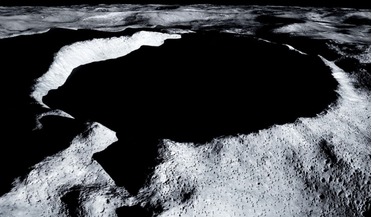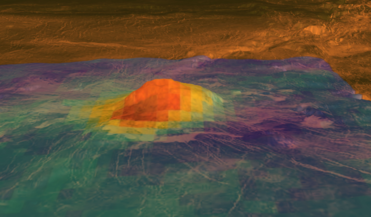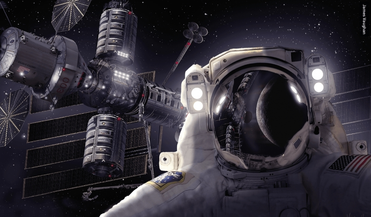 July 2019
Robotic astronomy on the Moon
July 2019
Robotic astronomy on the Moon
... could contain higher than average amounts of hydrogen, and water ice. Moon Express will therefore utilise this opportunity to explore the... Moon’s south pole for mineral resources and water. Building on the past ILO-1 evolution builds upon ...
 06 January 2020
New evidence suggests that Venus has active volcanoes
06 January 2020
New evidence suggests that Venus has active volcanoes
... are volcanically active; Saturn’s moon Titan spews out water ice, Jupiter’s moon Io has hundreds of volcanoes created... oxide minerals magnetite and hematite, due to the lack of water on the planet. Hematite in turn affects the minerals reflectance ...
 March 2016
Exploration and cooperation at the heart of European space vision
March 2016
Exploration and cooperation at the heart of European space vision
... the universe. “No human has ever visited the lunar pole regions, where unmanned missions have discovered water ice,” he continues. “This is an important resource because you can produce rocket propellant and oxygen from it. Both lunar...
 July 2021
A shared vision for space exploration
July 2021
A shared vision for space exploration
...On the surface of the Moon, long-term habitats are planned, supported by in-situ resource utilisation of regolith and water ice, supporting long-term, extensive exploration efforts. As the previous NASA Administrator Jim Bridenstine often said, “This...
 02 August 2017
First iodine fuelled thrusters pass critical design tests
02 August 2017
First iodine fuelled thrusters pass critical design tests
... on interplanetary missions throughout the solar system. It truly enables the science of the LunaH-Map mission, mapping water-ice at the lunar south pole with a miniature neutron spectrometer,” said Prof. Craig Hardgrove, Arizona State University...
 14 December 2017
AI detects eighth planet orbiting distant sun
14 December 2017
AI detects eighth planet orbiting distant sun
... pattern is often seen as evidence that the outer planets formed in a cooler part of the solar system, where water ice can stay solid and clump together to make bigger and bigger planets. The pattern seen around...